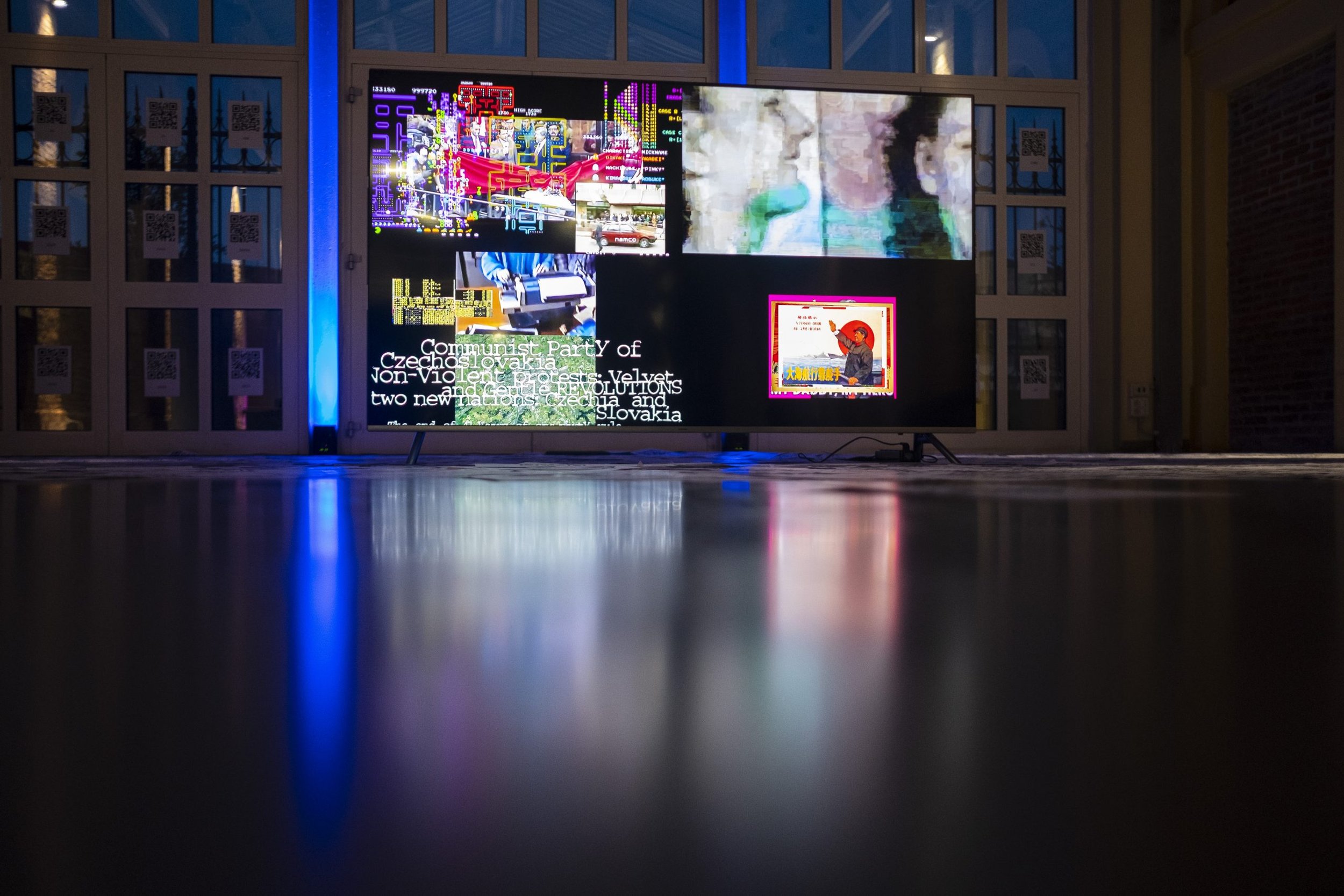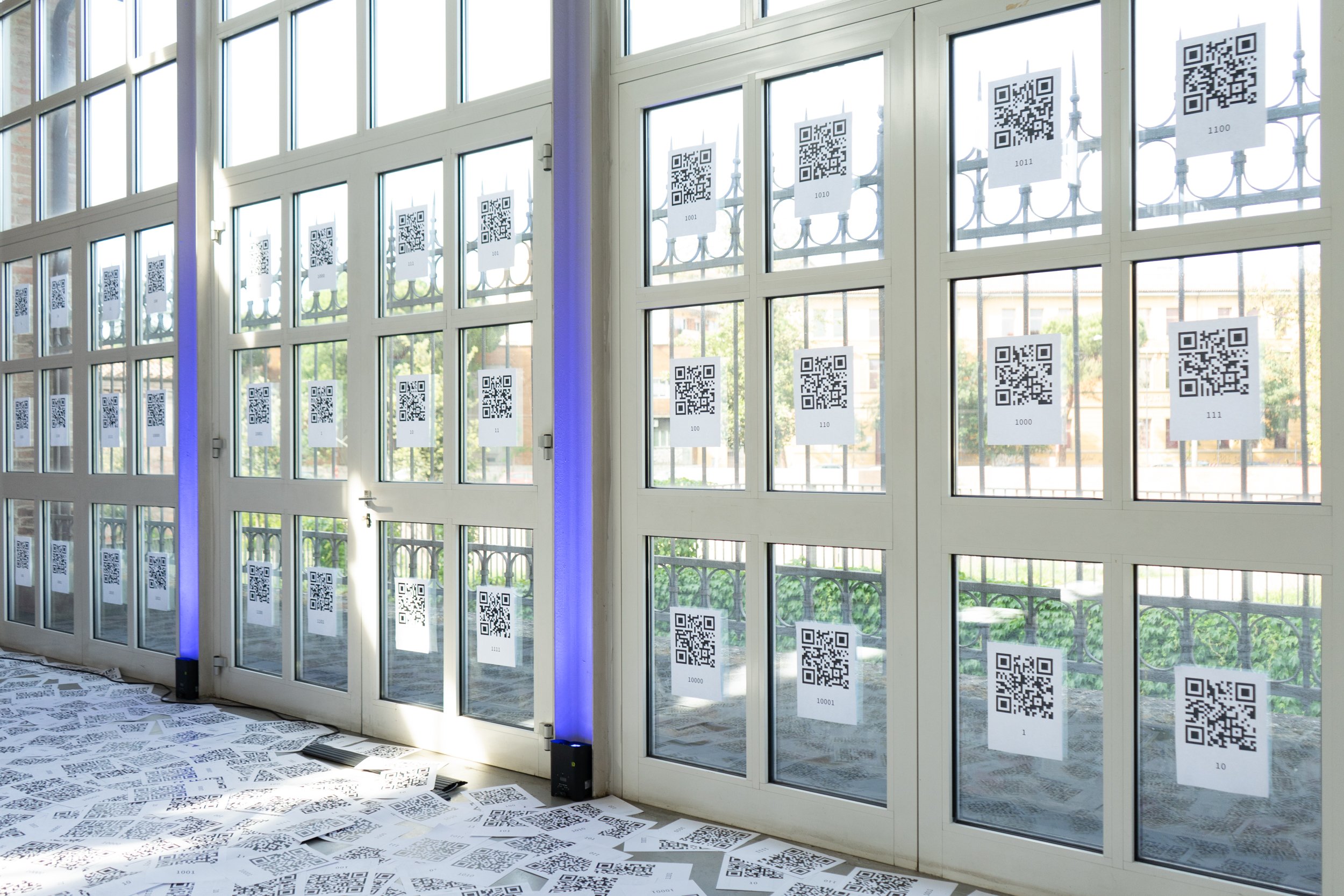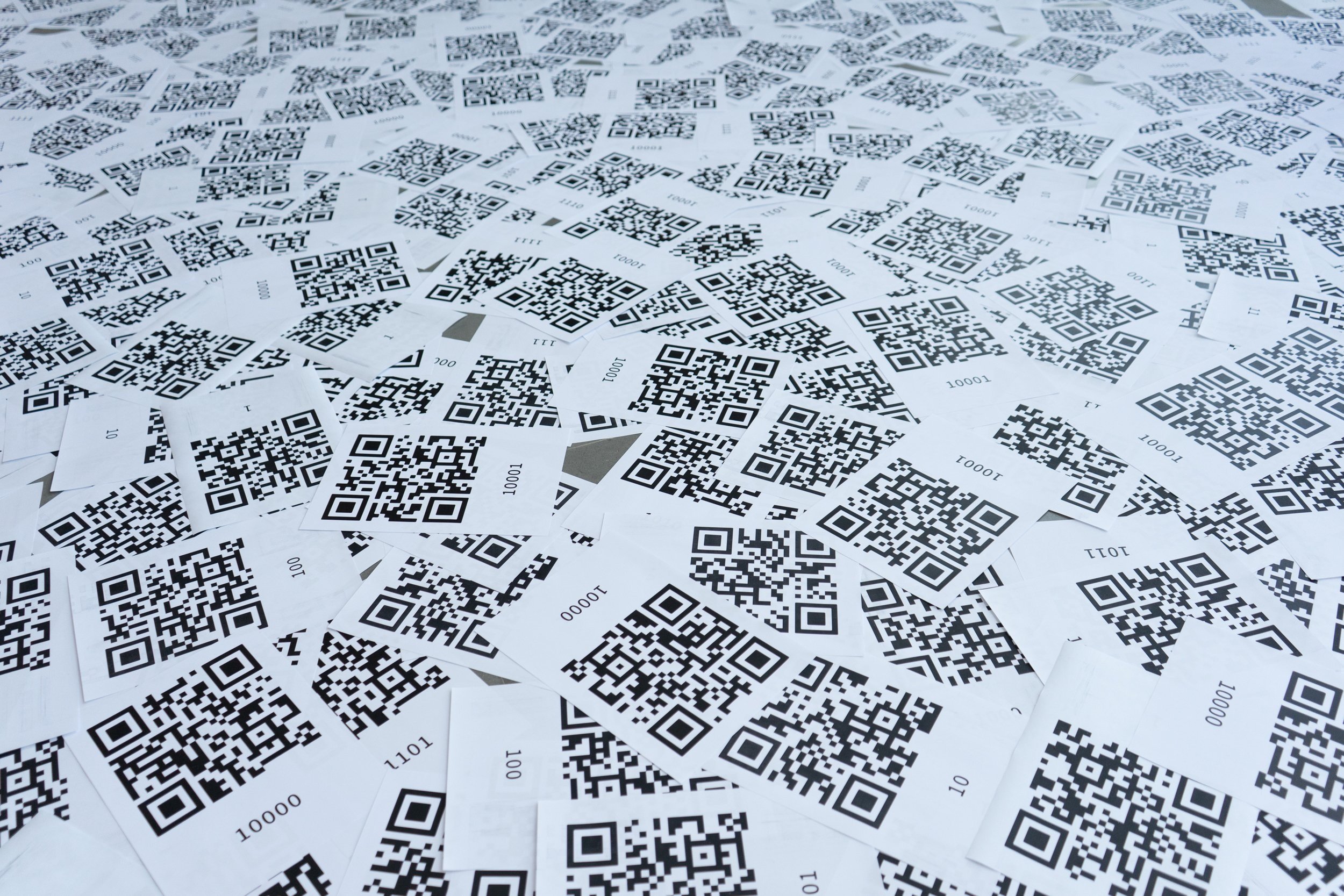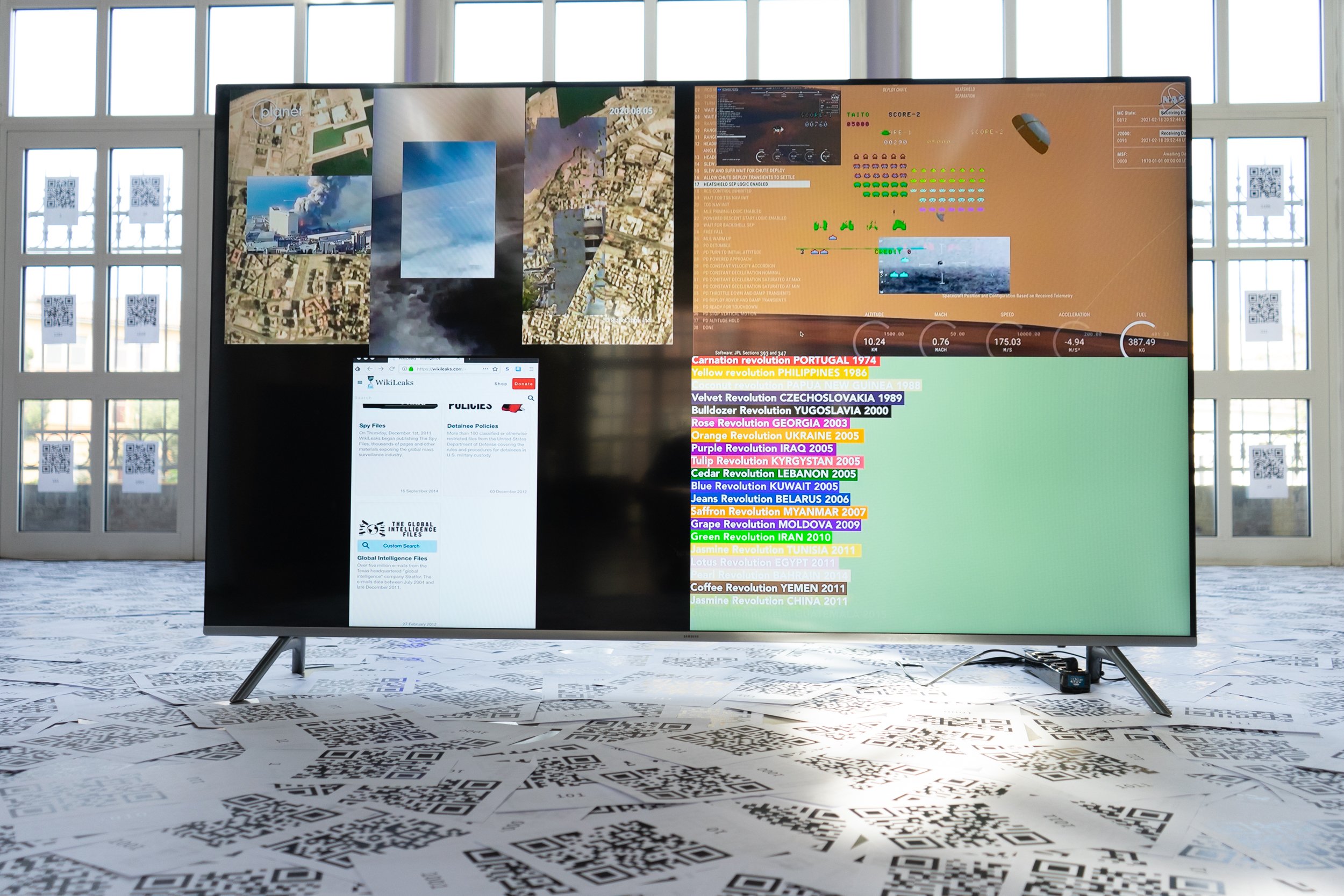RAGE Collective
Founding member of the RAGE Collective. An artist collective tackling issues surrounding politics with a fluid approach to membership. The collective was established in 2016 by a group of international artists who met while studying at the Royal College of Art.
Selected Exhibitions
2022
Chapter One, 404: Resistance in the Digital Age Chapter Two, 404: Surveillance is Surveying
This exhibition combines both chapters. Together they explore the dynamics of online power relationships and the ways resistance movements such as hacktivist movements, revolutions organised through social media and the widespread use of memes now use the internet to counter restrictions. Inspired by the censorship method of oversaturation of information online, this new work is an immersive split-screen video and sound installation. It is combined with 17 QR codes inviting the viewer to scan them onsite and transport them into a deeper experience, to reflect on the parallels between 1989 and today.
1700 A4 papers, HD split-screen 01:25:00, surrounding sound
Extract of rage404project.com shown online from 10/05/2022 to 10/06/2022
2019
404: Resistance in the Digital Age, looking at the period from 1989 to 2019, and commisioned by the Centre for Chinese Contemporary Art, CFCCA, in Manchester.
1989 was a significant year. Seismic events took place globally, most notably the fall of the Berlin Wall, The Tiananmen Square protests and the invention of the World Wide Web. These events created a palpable impact that continues to affect us even now thirty years later.
Using these key events as a starting point, RAGE Collective have developed this new commission for CFCCA, which traces methods of resistance over the last thirty years, looking at how digital platforms have been adopted as the primary means of organising and protesting.
404: Resistance in the Digital Age explores how digital technologies changed the way in which people express their discontent with their governments, organise and share information. Paying particular attention to some of the key events of the past decade such as the Occupy movement, Arab Spring, Ukrainian revolution and the Umbrella Revolution in Hong Kong, the exhibition looks at the ways in which internet, social media, and smartphones now play a crucial role in resistance movements. In light of the global growing surveillance online, the exhibition maps the ways in which governments and large data-collecting companies play the game of cat and mouse with civilians.
The past two decades have seen the rise in whistleblowers releasing classified information, the use of DDoS attacking (A Distributed Denial of Service) by hacktivists along with new platforms created to communicate freely and anonymously online. Some of the communication methods commonly used now come in the form of memes, emojis, videos, and live-streaming. The ability for civilians to spread information in real time and organise quickly had led to governments intentionally employing bandwidth throttling in order to slow down internet speed, and even go as far as to shut down the internet altogether.
Taking a particular interest in the proliferation of online censorship through the process of over-saturation of information, the work brings together archival footage from 1989 alongside contemporary material, encouraging us to reflect on the methods of resistance and control today and thirty years ago.
This work was devised and created by five artists: Amale Freiha Khlat, Bonnie Wong, Camilla Mora Scheihing, Tamara Kametani and Yoshi Kametani.
2017
Network
FLEEING CONFLICTS BUT WHERE TO NEXT
Various dimensions, prints, glass, wood, emergency blanket.
Supported by Movement Gallery, a converted gentlemen’s toilet at Worcester Foregate Street railway station, the exhibition aimed to show the satirisation of current chaotic and uncontrollable political madness.
The Odious Smell of Truth
Peter Kennard and the RAGE Collective
What does it mean to tell the truth, in a world of false news, social media misinformation and democratised information channels? And what can we achieve by getting angry? The Odious Smell of Truth exhibition by the RAGE Collective of international young artists from the Royal College of Art, led by world-renowned protest artist Peter Kennard, demonstrated the strength of collective action and puts under our noses issues that will define our future.
‘Our complex, connected media channels are changing the political landscape faster than we can keep up,’ says Kennard, who started making protest images around the occupation of Greenham Common. ‘Political surprises from the Arab springs or Brexit to the rise of Trump are all the result of a shift in information ownership that rivals Gutenberg’s printing press in era-shaping impact.’
As information is tailored for delivery within our increasingly short attention spans, manipulators of the ‘politics of protest’ understand that – rather than being just a framework for understanding social movements and political dissent – it’s fast becoming an instrument of political influence.
The common understanding that provokes millions to march is that democratic constitutional design invites protest movements to offer continual challenges. What is becoming increasingly apparent is that there is a growing power in protest; that expressions of mass dissent both reflect and influence mainstream politics – in the act of protesting and the sharing of dissent.
Nowhere is our cultural reflection seen more clearly than in protest art. Protest is a profoundly social impulse, and in a world of Brexit, Trump, populism, climate change, the ‘mother of all bombs’ and the rise of global migration, collectives like RAGE demonstrate the power of bringing together international voices in an expression of humanitarian dissent.
Can artists meaningfully lift their voices to persuade societies to put our common humanity centre stage? Peter Kennard believes they can: ‘Making a critical image that communicates is so important, and artists are trained to have a refined sense of which images will have visual impact. These younger artists are deeply concerned and angry about the state of the world, and it’s important that they express that.’
‘It’s important for art colleges to have a social base to their teaching that enables students to explore their beliefs,’ Kennard continues. ‘These young artists recognise that they’re working in urgent times, in which government policy is often at odds with citizens’ beliefs. They combine rage with hope, understanding that we still have everything to play for, and that emotional charge gives real power to the messages they’re advocating.’
Globalisation in education provides a unique opportunity for cultural interchange. This is not lip service; these artists come from over 60 countries worldwide and work in neighbouring studios for two years. Debating the role of the artist in an increasingly globalised world, these young artists are themselves the embodiment of that emerging community.
‘We cross-reference what happened in each other's countries and cultures, and relate different issues to our own experiences,’ says RAGE Collective. ‘Several of us come from a background of colonialism, so we share similar experiences. It also resonated with very different experiences, for example a Korean concern with identity and power. The process of discussing has been impactful on every one of us.’
Bringing with them the complex understanding of both a multiplicity of international issues and the political situation in their country of origin, and a willingness to explore their beliefs within an aesthetic discourse, these internationally trained artists inform each other’s work and liberate UK-trained students with their ability to be critical. They express a need to represent intensifying conflicts around immigration policy, LGBT repression, politics, protest and populism – issues that are urgent, even life-threatening, to people around the world.
Kennard says, ‘These global voices reflect back our privilege as a democratic first-world nation. The Korean, Filipino, South African and Hong Kongian perspectives, seeing their own countries through the focused lens of exile, remind us that we are fortunate to be able to criticise our politicians and political systems without fear of incarceration, or worse.’
‘These young artists are making art in a variety of media that doesn't turn away from the global state of emergency but rather tries to explore their deep concern about the direction in which society and politics is moving,’ Kennard continues. ‘They want to make work that punctures the lies both of news and “fake news”, and search for ways to communicate directly to a global audience.‘
In order to be meaningful, political art must communicate in and far beyond the art world that spawned it. By bringing visual quality and critical intelligence into play, protest art can also move into uncharted cultural spaces powered by new media –and online activism, whether through subvertising or brandalism, has the capacity to mobilise unprecedented numbers.
RAGE Collective says: ‘We feel that what we're doing explores how artists can use different strategies and approaches to talk about very current issues in a myriad of ways. It is important to do it as a collective in order to have a strong stance, but what we're saying is that there is no single way to approach politically engaged practice.’
Truth is powerful. Eminent academic Stanley Fish’s deeply serious postmodern quip, ‘Ye shall know that truth is not what it seems, and that truth shall set you free,’ now carries a playful innocence to our media-battered ears and minds. ‘Reclaiming the power of the image and putting it to the service of truth and truth-telling is paramount,’ says Kennard, ‘and protest art that challenges lies and surfaces clear truths is grist to the mill of progressive discourse.’









